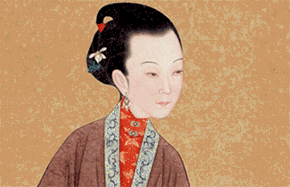Fengyang drum dance gets new lease on life
 |
|
Student Li Man and her teammates in a rehearsal. [Photo by Zhu Lixin/China Daily] |
Trick of beggars
China has many local operas, most of which were performed to celebrate happy occasions. But the Fengyang flower-drum dance originates from hard memories.
Although it was later called a dance, the art did not have much to do with dancing at first. It was more like telling stories while playing gongs and drums, according to Shi Peizhi, chief of ASTU's youth league.
Fengyang was the birthplace of Zhu Yuanzhang (1328-98), the first emperor of the Ming Dynasty (1368-1644). During Zhu's rule, he brought thousands of people from across China to Fengyang, in order to develop his hometown. In those days, having more people around was thought to mean more prosperity would soon come.
But instead of becoming a prosperous place as Zhu had planned, the region often suffered from famine. But the emperor did not allow the people to leave the county to beg for food, so many people had to disguise themselves as traveling opera players.
After leaving Fengyang, the people went to other parts of China, mostly relying on playing the flower-drum dance to ask for offerings.
The Song of Fengyang begins with "Say Fengyang, say Fengyang, Fengyang has been a good place, after Zhu Yuanzhang ascended the throne, famines could be seen in nine of 10 years."
A book written in the Qing Dynasty (1644-1911) said, "The tones were quite sorrowful, telling distressing stories of leaving their hometown."
It was also one of the hardest times for Fengyang in the years before the Xiaogang villagers signed their secret agreement. As a result, many Fengyang people once again fled and the flower-drum dance was again known nationwide.
- National intangible cultural heritage: Gengcun story in Hebei
- Online broadcasting breathes new life to intangible cultural heritage promotion
- Intangible cultural heritage fosters youth ties
- China's intangible cultural heritage week kicks off in Pakistan
- Children learn traditional intangible cultural heritages in E China



















